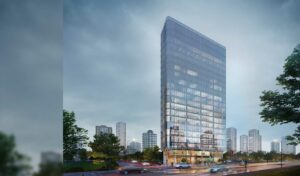Society Maintenance Charges (SMC) play a crucial role in the upkeep and maintenance of residential societies, apartments, or condominiums in real estate. Residents need to understand what SMC entails and what it covers.
Society Maintenance Charges are fees residents pay for upkeep and maintenance of the common areas and amenities in their residential society. This includes elevators, garden areas, water supply, security, and waste disposal. The managing committee of the organization, elected by the residents, is responsible for collecting the SMC and maintaining the common areas and amenities.
The amount of SMC is determined based on the number of residents in the society and the associated costs. The managing committee may also consider factors such as inflation, increase in maintenance costs, and the need for new facilities or upgrades to existing ones. SMC is usually paid monthly or quarterly, but the frequency may vary from society to society.
Maintenance Charges in Society and How They Are Calculated
While the concepts and rules for calculating upkeep in society differ from state to state, the general anatomy is the same. The same is valid for tenant society maintenance fees collected monthly or yearly for renting an apartment unit in a complex. We can acquire the most excellent understanding from the precise rules provided below, with or without a few exceptions in each homeowner’s circumstance.
- Service costs: These are the fundamental maintenance fees levied by apartment complexes or cooperative housing societies to residents for them to obtain a variety of services such as payment for society administration, technical, cleaning crew, plumbing, and so on.
- Building repair: The cost of repairs is levied here to cover the expenditures of frequent maintenance of community utilities in society. This is typically paid per square foot or 0.75% of the building cost of an apartment unit.
- Parking: This is the flat-based maintenance charge and the cost determined by the society management body.
- Water inlets: The fee is assessed based on water inlets and water unit readings to calculate the water consumed in any given housing unit.
- Insurance: Every property should be insured against harsh weather and accidents, with the cost often shared by homeowners in an apartment complex or cooperative society.
- Property tax: This is a tax levied by the government on the society on a per-square-foot basis, which is often split among homeowners in a complex or community.
- Sinking fund: This is the apartment maintenance charge set by the society administration, roughly 0.25% of the building cost of each apartment unit every year.
- Non-Occupancy Charge: This is the charge paid by units that are rented or unoccupied by the owners, and it usually does not exceed 10% of the service charges.
Failing to pay SMC can result in legal action taken by the managing committee. This may include filing a case in a consumer court or a suit for recovery of dues in a civil court. In severe cases, the managing committee may even disconnect essential services such as water or electricity supply to the apartment.
It is important to note that Society Maintenance Charges can be increased, based on the increase in maintenance costs, the need for new facilities or upgrades to existing ones, or inflation.
In conclusion, these real estate maintenance tips for society maintenance charges are crucial in maintaining residential societies’ common areas and amenities. It is essential for residents to understand the purpose of SMC, what it covers, and the consequences of not paying it. By being aware of these factors, residents can contribute to the maintenance and upkeep of their society, ensuring a safe and comfortable living environment.











1 thought on “All You Need To Know About Society Maintenance Charges”
Whatever written here to pay maintenance costs are false . Certain mandatory parameters are required to be compiled with. In one recent case filed by me and several other society members Justice Department has decide to appoint senior crisis lawyers to file Criminal writ cum public interest litigation. Case is also Registered by Central Vigilance Commission, Central Bureau of Investigation, COMPTROLLER AND AUDITOR GENERAL OF INDIA , ENFORCEMENT DIRECTORATE, REVENUE DEPARTMENT SECRETARY . This is simply huge money laundering, Cheating , Extortion and Huge Tax evasion in thousands of Crores rupees.